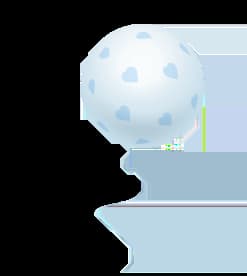Congratulations on becoming a new parent! As your baby grows, one important aspect to keep track of is their growth. As a new parent, it's natural to be concerned about your baby's growth and development. One tool that healthcare professionals use to track your baby's growth is the baby growth chart. This chart plots your baby's measurements, including height, weight, and head circumference, against standard growth curves. Understanding how to read a baby growth chart can help you keep track of your baby's progress and identify any potential health concerns.
Here's a guide on how to read a baby growth chart and what you need to know as a new parent.
1.Understanding the Different Lines on the Chart
The growth chart is a tool used to track a baby's weight, length, and head circumference over time. Growth charts for boys and girls are different, and they are based on data from thousands of babies in India. The chart shows the 3rd, 10th, 25th, 50th, 75th, 90th, and 97th percentiles for weight, length, and head circumference. These percentiles are based on the average growth of babies in India, so your baby's growth will be compared to the average.
When you look at a baby growth chart, you will see several lines plotted on it. These lines represent different percentiles, which show how your baby's measurements compare to other babies of the same age and gender.
For example, the 50th percentile line represents the median or average measurement for babies of the same age and gender. If your baby's measurement falls on the 50th percentile line, it means that half of the babies in the same age and gender group have measurements higher than your baby's, and the other half have measurements lower.
The upper lines, such as the 75th or 90th percentile, represent higher measurements. If your baby's measurement falls on these lines or above them, it means that your baby is bigger than most babies of the same age and gender. The lower lines, such as the 10th or 25th percentile, represent smaller measurements.
2.Knowing Your Baby's Percentile
When you take your baby for a check-up, your healthcare provider will measure your baby's height, weight, and head circumference and plot the measurements on the growth chart. By doing so, you can see how your baby's measurements compare to other babies of the same age and gender.
They will plot your baby's weight, length, and head circumference on the growth chart. Each measurement will be plotted on a separate line on the chart. The lines will be different colors or patterns, and they will correspond to the percentiles.
The 50th percentile is the average, which means that half of the babies in India are above this line, and half are below it. If your baby's measurements are on the 50th percentile, then your baby is growing at an average rate compared to other babies in India.
If your baby's measurements are above the 50th percentile, then your baby is growing at a faster rate than the average. If your baby's measurements are below the 50th percentile, then your baby is growing at a slower rate than the average.
If your baby's measurements are on the 3rd or 97th percentile, then your pediatrician may want to monitor your baby's growth more closely. If your baby's measurements fall off their previous growth curve, then your pediatrician may want to investigate further.
It's essential to remember that the percentile is not a measure of how healthy your baby is. Babies grow at different rates, and some babies are naturally bigger or smaller than others. Instead, the percentile helps to track your baby's growth over time.
If your baby's measurements consistently fall on the same percentile over several check-ups, it means that your baby is growing at a steady rate. If your baby's measurements vary significantly from one check-up to the next, it may indicate a growth issue that your healthcare provider may need to investigate further.
3.Checking for Healthy Growth
As a new parent, it's crucial to know what to look for when checking your baby's growth chart. Here are a few things to keep in mind:
- In the first few months, babies typically gain weight rapidly, usually at a rate of 150 to 250 grams per week. By six months of age, most babies double their birth weight.
- After six months, babies tend to grow at a slower pace. They may gain around 500 grams to 1 kg per month until they reach one year of age.
- Your baby's head circumference is an essential measurement because it can indicate brain growth. Your healthcare provider will measure your baby's head circumference at each check-up, and it should remain proportionate to your baby's height and weight.
- If your baby's measurements consistently fall below the 5th percentile or above the 95th percentile, it may indicate a growth issue that your healthcare provider may need to investigate further.
It's important to remember that the growth chart is just a tool. It's not a definitive measure of your baby's health or development. Some babies may be naturally smaller or larger than others, and their growth may not follow the standard curve. Additionally, other factors can affect a baby's growth, such as genetics, nutrition, and illness.
Tips for Promoting Healthy Growth
While genetics and other factors may play a role in a baby's growth, there are some things you can do to promote healthy growth and development.
- Breastfeed your baby for at least six months and continue breastfeeding while introducing solid foods until your baby is one year old. Breast milk contains all the necessary nutrients for a baby's growth and development.
- Provide a variety of nutritious foods as your baby grows. Introduce new foods gradually and watch for any signs of food allergies or sensitivities.
- Make sure your baby gets enough sleep. Newborns need 16-17 hours of sleep per day, while older babies need 12-14 hours.
- Give your baby plenty of opportunities for physical activity. Tummy time, crawling, and playtime can help promote motor development.
- Avoid exposing your baby to secondhand smoke, which can increase the risk of respiratory problems and other health issues.
Conclusion
Reading a baby's growth chart can help you monitor your baby's growth and development over time. Understanding how to read and interpret the chart can help you make informed decisions about your baby's health and well-being.
If you are concerned about your baby's growth, talk to your pediatrician. They can help you interpret the growth chart and address any concerns you may have. They may also recommend additional tests or refer you to a specialist if necessary.
Mamy Poko Pants will remain your faithful companion throughout your baby’s childhood, and they will help to keep your baby dry and comfortable while you focus on their growth and development.
FAQ's
Q. What is a baby growth chart?
Ans.A baby growth chart is a tool used by doctors to track your baby’s height, weight, and head circumference over time. It compares your baby’s measurements to national averages using percentiles, helping monitor growth patterns and identify any unusual changes in development early.
Q. What do the percentile lines mean on a growth chart?
Ans.Percentile lines show how your baby’s measurements compare to others of the same age and gender. For example, the 50th percentile means your baby is average in size, while the 90th means bigger than most, and the 10th means smaller than most.
Q. Are separate growth charts used for boys and girls?
Ans.Yes, growth charts differ for boys and girls because they grow at different rates. Boys usually have larger average measurements, so using gender-specific charts provides a more accurate comparison of your baby’s growth against typical patterns.
Q. What does it mean if my baby is in a low percentile?
Ans.A low percentile doesn’t always indicate a problem. Some babies are naturally smaller. However, if the measurement drops drastically or consistently falls below the 5th percentile, your doctor may investigate further to ensure healthy development and rule out medical concerns.
Q. How often should a baby’s growth be checked?
Ans.Pediatricians typically check your baby’s growth during routine visits—usually at birth, 1, 2, 4, 6, 9, and 12 months. These checkups help track steady growth and allow early detection of any issues through patterns on the chart.
Q. Why is head circumference measured on growth charts?
Ans.Head circumference reflects brain growth and development. Measuring it helps detect neurological or developmental issues early. It’s compared alongside weight and length to ensure all aspects of your baby’s growth are progressing in proportion.
Q. What can cause variations in growth percentiles?
Ans.Variations can occur due to genetics, nutrition, sleep patterns, illness, or developmental differences. A single low or high measurement isn’t always a concern—consistent trends over time are more important for evaluating overall health.
Q. Can a baby grow normally even if not on the 50th percentile?
Ans.Yes, many healthy babies grow well while being above or below the 50th percentile. What matters most is consistent growth over time, not hitting the median. Your pediatrician will help interpret your baby’s chart and monitor steady progress.
Q. What should I do if I’m concerned about my baby’s growth?
Ans.Talk to your pediatrician if you notice sudden changes in weight, height, or head circumference, or if your baby drops significantly in percentile rank. They may suggest lifestyle changes, extra checkups, or further tests if needed.
Q. How can I support healthy growth in my baby?
Ans.Support your baby’s growth by offering nutritious food, ensuring adequate sleep, breastfeeding or formula feeding as advised, encouraging physical activity, and attending regular health checkups. Avoid exposing your baby to smoke or stress for better overall development.

















